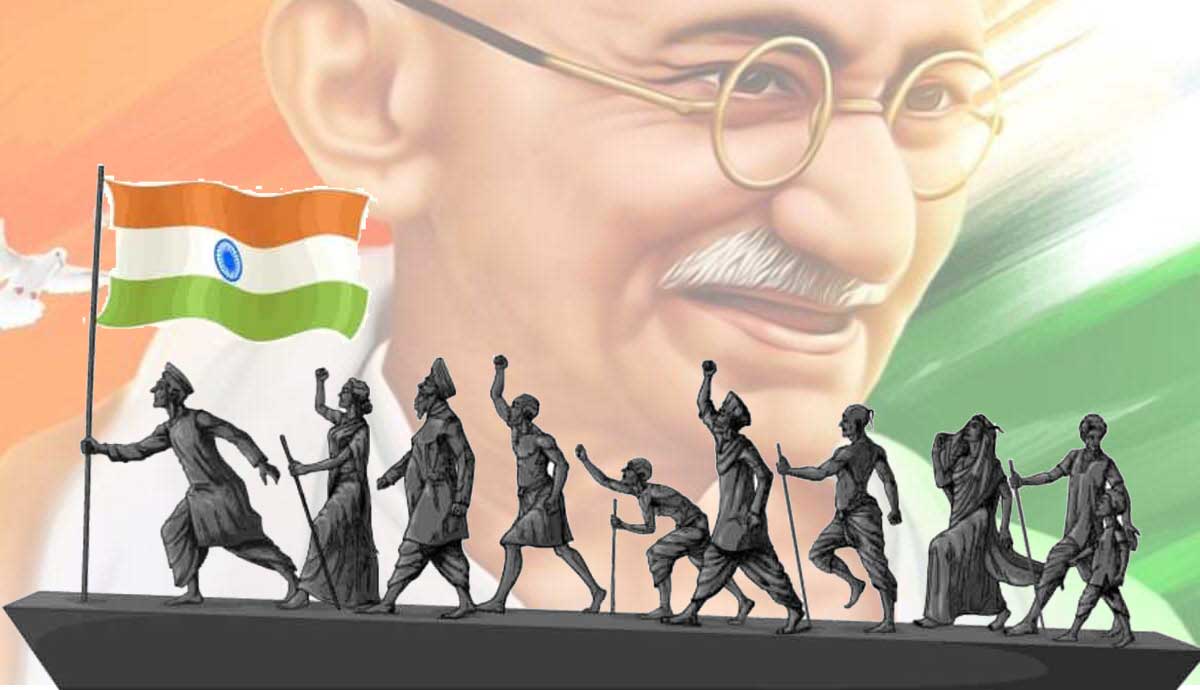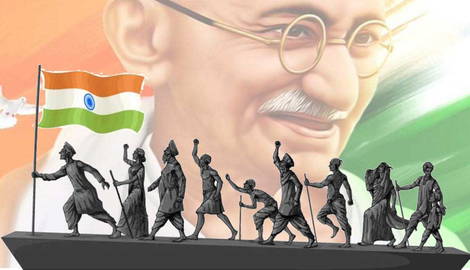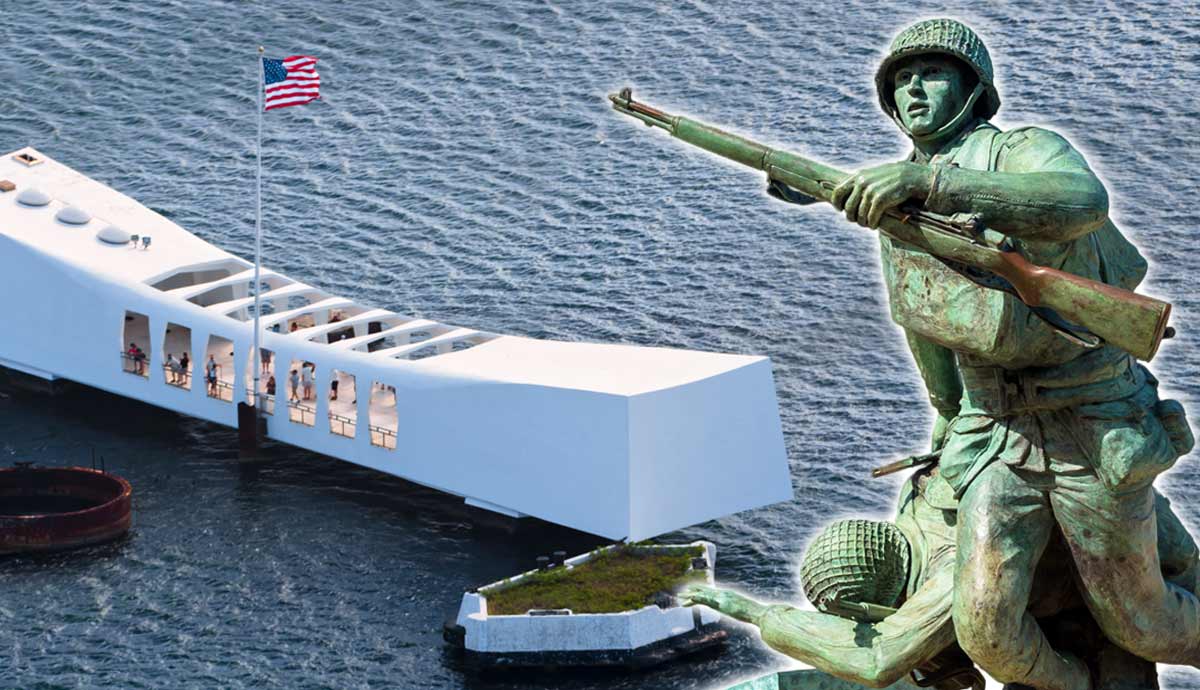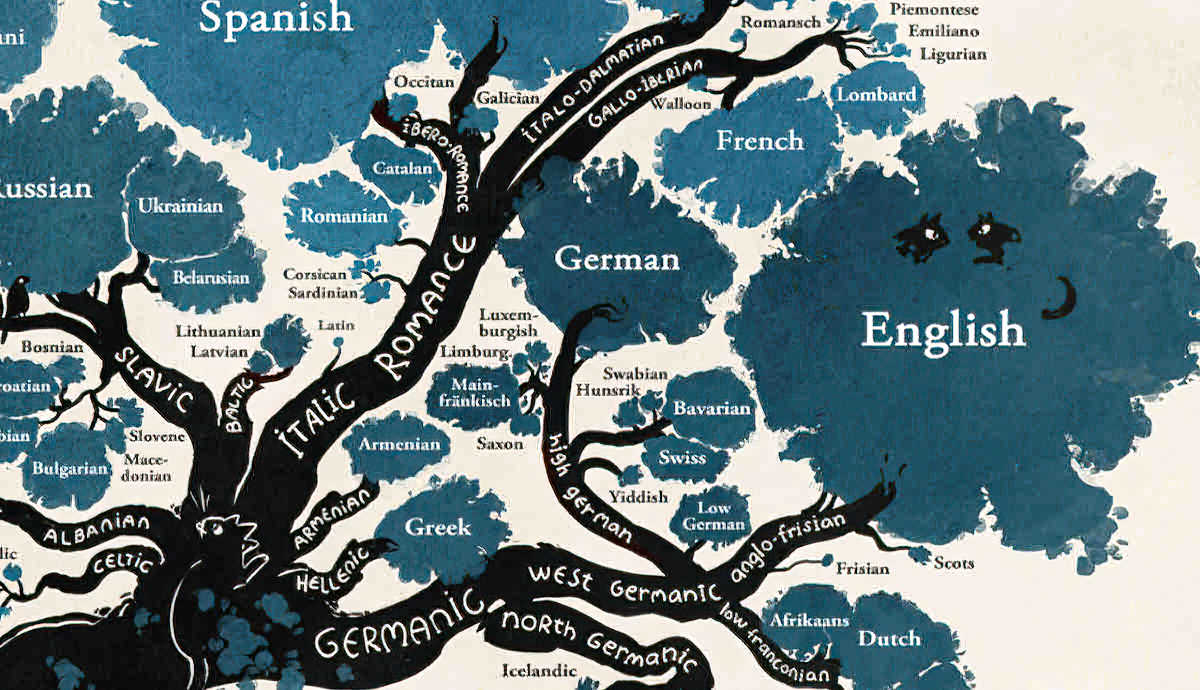
The British were not the first Europeans to arrive on the Indian subcontinent in the era of European explorers, but they were the ones who had the greatest impact on India. Initially arriving for economic trade, their reach extended to political and military control. When direct political control was placed in the hands of the British Crown, India’s independence movement was born. India’s nationalist movement grew as it increasingly sought local political representation and improved civil rights. Six key moments that set India on the path to becoming the modern independent country that it is today are explained below.
1. European Arrivals Sow the Seeds for India’s Independence Movement

The British were not the first European explorers since the times of the Roman Empire to arrive in India. Portugal’s Vasco de Gama reached India in 1498 in search of trading rights, and the Portuguese maintained a colonial foothold in India into the 20th century. In 1602, the Netherlands formed the United East India Company, and its first factory was founded in India in 1605. However, Dutch influence as a colonial power in India was declining by the 18th century.
At the end of the 16th century, both the Dutch and the British were challenging Portugal’s monopoly of trade with Asia. The British had established the English (later British) East India Company in 1600, two years before the Dutch founded their trading company. However, Captain William Hawkins did not arrive in Agra, India until 1609. The Mughal Jahangir, Emperor of the Mughal Empire, granted the English permission to build a factory in nearby Surat, located in western modern-day India.
Later, the French and, to a lesser extent, Denmark-Norway, Sweden, Austria, and Prussia had colonies or trading links in India. The Dutch and later the French were Britain’s main rivals in the region. However, it was the British who had direct or indirect control over all of present-day India by the middle of the 18th century.
2. The (British) East India Company Becomes a Monopoly

The charter for the joint-stock East India Company was granted by Queen Elizabeth I. It was initially formed to trade in the Indian Ocean region (the East Indies were the Indian subcontinent and Southeast Asia) and later expanded to include East Asia. It became the most powerful multinational company the world had ever seen. The East India Company has been described as “a company with the influence of Google or Amazon, granted a state-sanctioned monopoly and the right to levy taxes abroad – and with MI6 and the army at its disposal.” At one point, the East India Company’s army comprised 260,000 local recruits, or sepoys – twice the size of the British Army.
As of 1694, other British companies were allowed to trade in India, but none of these seriously threatened the East India Company’s dominance. The East India Company’s lobby also battled with Parliament. The Company wanted even more autonomy, while Parliament wanted a greater share of customs income and taxes. Not until 1813 did the Company’s commercial monopoly end, which gave the British Crown sovereignty over British India. However, the East India Company continued to rule India under the auspices of Parliament.

From the mid-1700s to the early 1800s, the East India Company accounted for half the world’s trade. As the Mughal Empire started to decline in the 18th century, the East India Company also became involved in local disputes. The Battle of Plassey, which took place on June 23, 1757, was a victory for the British East Indian Company and marked the start of nearly two centuries of British rule in India. The French East India Company had been fighting the British Company in India for over a decade prior to this, and the last independent Nawab of Bengal supported France’s ambitions. This battle allowed the British to take control of the region of Bengal. The British East India Company would go on to seize control of most of the rest of the Indian subcontinent as well as Burma and Afghanistan.
3. The Indian Rebellion of 1857
By 1857, the British East India company was acting as a sovereign power in India on behalf of the British Crown. India wasn’t a united country at the time but was instead a number of territories controlled by a variety of rulers. The British East India Company governed about two-thirds of the subcontinent.

From early in the 19th century, the Company was endeavoring to overhaul India’s economy and legal system. Fears that the British were trying to force conversion to Christianity also made the Indian people feel that their traditional way of life was being threatened. In 1857, of the 159,000 men in the Bengal Army, just 24,000 were Europeans and the other 135,000 were Indian. The ratio meant that the Bengal Army was less disciplined than the Company’s other armies. Within the Bengal Army, Indian soldiers felt discontent over poor pay and working conditions as well as racial and cultural insensitivity from the British soldiers. High-caste Indian sepoys also resented attempts to extend recruitment to lower-caste Hindus, Sikhs, and Muslims.
Further unrest occurred in early 1857 with the introduction of the Enfield rifle, which came with pre-greased cartridges rumored to contain beef tallow and lard derived from pork. These types of grease were offensive to both Hindus and Muslims. In order to load the rifle, sepoys had to bite the cartridge to release the powder. An attempted revolt in March 1857 resulted in the entire regiment being disbanded in disgrace, which other sepoys felt was too harsh a punishment.

The Indian Rebellion of 1857 began in earnest on May 10, 1857. The previous day, 85 members of a Bengal cavalry regiment had been jailed for refusing to use the Enfield rifle cartridges. Their comrades broke them out of prison, ransacked the nearby military station, and sought to kill any Europeans they could find. This unrest spread to other areas, particularly in northern and central India, and the British were slow to react. A few local rulers and thousands of civilians joined the revolt. Extreme violence on both sides of the conflict occurred. Not until June 19, 1858, did the rebels surrender when the British recaptured the city of Gwalior. A peace treaty was signed on July 8 to officially end the rebellion.
As a result of the Indian Rebellion of 1857, the East India Company’s rule over India, which had lasted from 1757 to 1858, was ended. The British Parliament passed the Government of India Act in 1858, which liquidated the British East India Company and transferred control of government in India to the British Crown. Other reforms included the employment of higher-caste Indians in government, the end of the seizure of Indian rulers’ land, no further interference in religious matters, and a change in the type of rifle given to Indian soldiers. Although other rebellions against British rule had occurred prior to 1857, the Rebellion of 1857 is often considered the start of India’s independence movement.
4. The Establishment of the Indian National Congress, 1885

It was an Englishman who founded the Indian National Congress, which was another turning point in India’s independence movement. Retired Indian Civil Service officer Allan Octavian Hume had reached out to selected alumni of the University of Calcutta in 1883, writing:
“Every nation secures precisely as good a government as it merits. If you, the picked men, the most highly educated of the nation, cannot, scorning personal ease and selfish objects, make a resolute struggle to secure greater freedom for yourselves and your country, a more impartial administration, a larger share in the management of your own affairs… hopes of progress are at an end, and India truly neither desires nor deserves any better government than she enjoys at present.”
Crown Rule in India (1858-1947), also known as the British Raj, actively sought the cooperation of English-educated Indians who were more amenable to British culture and political thinking. In May 1885, Hume received the approval of the British viceroy in India to create an “Indian National Union.” This new political body was to act as a platform for Indian public opinion and was affiliated with the British government. 72 delegates attended the first session on December 28, 1885, in Mumbai. Hume was named General Secretary while Womesh Chunder Bonnerjee was elected president.

In its earlier days, the Indian National Congress passed several resolutions during its annual sessions. These resolutions covered civil rights, the end to certain administrative abuses, elected Indian representation on legislative councils, and economic policy. The Congress was able to put forward these resolutions, but the British government had the final say as to whether to act on them. In particular, calls for greater powers for legislative councils and elected Indian representation were largely ignored.
Muslims viewed the Congress negatively because it was largely made up of Hindus. Many Hindus also had an unfavorable view of the Congress because they regarded it as supportive of Western cultural invasion. Ordinary people were not generally concerned with the Congress’s existence because it was seen as an elitist body. However, over time, Indian nationalist sentiment grew. Indian nationalists opposed the British colonial system which denied freedom of expression for nationalists and didn’t give them any significant roles in running their own country. Moderates were able to overrule the nationalists in the Congress’s early days, but when the British entered the British Indian Army into the First World War, the national political debate changed. India’s independence movement also gathered strength due to one man’s return to his homeland.
5. Mahatma Gandhi Returns to India, 1915

Mahatma Gandhi was born in India in 1869, studied law in London between 1888 and 1891, and left India in 1893 to work as a lawyer in South Africa. On his return to India in 1915, he joined the Indian National Congress. He had gained a reputation in South Africa as being a leading Indian nationalist, theorist, and community organizer. In 1909, Gandhi wrote a book, Hind Swaraj (Indian Home Rule), which advocated for Indian independence, rejecting Western civilization, and using passive resistance to achieve these means. In 1921, he took leadership of the Congress, and on January 26, 1930, the Indian National Congress declared India’s independence from the British Empire. Britain did not recognize this declaration, but negotiations continued.
Gandhi spent the rest of his life fighting for India’s independence movement and advocating nonviolent resistance as a form of protest. He was arrested on numerous occasions and jailed eleven times. Two important events that occurred soon after Gandhi’s return to India occurred in 1919 that increased Indian people’s attitude toward Indian nationalism and political independence. These events also led to Gandhi advocating the boycott of British products as well as the boycott of British institutions, law courts, and resignation from government employment.

The first event that occurred in 1919 was the passage of the Rowlatt Act. The Rowlatt Act was passed on March 18, 1919, and was an extension of emergency measures that had been implemented during the First World War. The Rowlatt Act meant that anyone suspected of “terrorist” activities could be arrested for up to two years without trial, no jury was required in trials of “forbidden political acts,” police could detain people for no reason, police didn’t need a search warrant to search people or premises, and freedom of the press was curtailed. Future Prime Minister of India Jawaharlal Nehru noted at the time that Gandhi’s entry into the protests signaled the introduction of a voice that was different from all the others.
Protests, sometimes violent, broke out as a result of the enactment of the Rowlatt Act. Gandhi called for a one-day national strike in early April as a form of dissent. Less than one month after the passage of the Rowlatt Act, the Jallianwala Bagh Massacre, also known as the Amritsar Massacre, took place.

India had been in a state of unrest since the passage of the Rowlatt Act. On April 13, 1919, an unarmed crowd had gathered for a Sikh festival in Amritsar, Punjab. Brigadier-General Reginald Dyer had issued a ban on public meetings three days earlier because of looting and rioting. It’s not known how many people attending the festival were defying orders and how many were unaware of the ban on public meetings and merely wanted to enjoy a religious festival. Dyer and his soldiers arrived at the festival, sealed off the exit, and began firing into the crowd.
Estimates say that at least 370 people were killed and well over a thousand were injured after just ten minutes of gunfire. The Amritsar Massacre led many previously moderate Indians to abandon their loyalty to the British and take up the nationalist cause. Gandhi soon began to organize his first large-scale nonviolent protest campaign, the non-cooperation movement. The Amritsar Massacre was yet another catalyst for India’s independence movement.
6. Impact of the Second World War on India’s Independence Movement

The Second World War may not seem like a key point in India’s independence movement, but India would not have achieved independence in 1947 if World War II had never occurred. In August 1941, American President Franklin D. Roosevelt and British Prime Minister Winston Churchill held the Atlantic Conference and released a joint declaration called the Atlantic Charter. Clause 3 of the Charter states:
“[The US and UK] respect the right of all peoples to choose the form of government under which they will live, and they wish to see sovereign rights and self-government restored to those who have been forcibly deprived of them.”
Initially, Roosevelt and Churchill seemed to have agreed that the third clause would not apply to Africa and Asia. However, the people of India, along with those in countries like Burma, Malaya, and Indonesia asked if this clause extended to their countries. Because these countries were needed to contribute to the Allied war effort, Roosevelt put some pressure on Britain to delay the issue of self-determination of the colonies until the end of the war.

When the war ended, Britain lacked the economic resources to run its own country, let alone its colonies. Indeed, like other European countries, the UK relied on Marshall Plan economic aid after the war’s end. Additionally, when the war ended, India had a standing army of 2.5 million men that was far too large for the 40,000-strong British force stationed in India to control. Despite Gandhi’s calls for a Quit India movement in 1942, a movement that called for the end of British rule in India, Indian soldiers fought in Europe, North Africa, southeast Asia, and defended the Indian subcontinent against Japanese forces.
India made a sizeable financial, industrial, and military contribution to Britain’s war campaign. When the war finished, India was the world’s fourth-largest industrial power. Its increased political, economic, and military influence cleared the way for India’s independence which came two years later. India’s independence movement finally achieved its goal in 1947.










